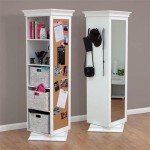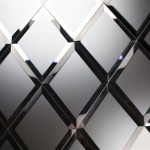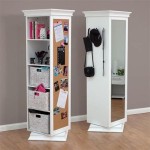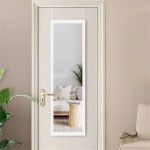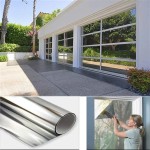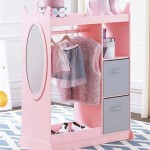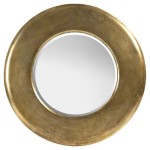Theater Dressing Room Mirror Lighting
Proper lighting is crucial for theatrical performers. It allows them to apply makeup accurately, assess costume details, and prepare for their roles effectively. The dressing room mirror, a central element in this preparation process, requires specific lighting considerations to ensure optimal functionality and create a conducive environment for performers.
The primary goal of dressing room mirror lighting is to provide even, glare-free illumination that accurately reflects colors. This allows performers to see the true shades of their makeup and costumes, preventing mismatched colors or overly dramatic applications that may not translate well on stage under different lighting conditions. Natural daylight is the ideal reference point for color accuracy, but achieving this consistently in a dressing room setting can be challenging.
Several factors influence the effectiveness of dressing room mirror lighting. Bulb type plays a significant role in color rendering. Incandescent bulbs, though historically common, tend to skew colors towards the warmer end of the spectrum. Halogen bulbs offer better color rendering but generate significant heat, which can be uncomfortable in a confined dressing room space. LED bulbs have become increasingly popular due to their energy efficiency, long lifespan, and excellent color rendering capabilities. Choosing LEDs with a high Color Rendering Index (CRI) rating, ideally 90 or above, is crucial for accurate color representation.
Placement of light fixtures is another critical factor. Ideally, lights should be positioned on either side of the mirror, at approximately eye level, to minimize shadows and provide even illumination across the face. This arrangement prevents harsh shadows that can distort facial features and make makeup application difficult. Avoid placing lights directly above the mirror, as this can create shadows under the eyes, nose, and chin.
The intensity or brightness of the lighting is equally important. Dim lighting makes it difficult to see details, while excessively bright lighting can be harsh and create glare. Dimmer switches are a valuable addition to dressing room lighting systems, allowing performers to adjust the brightness according to their needs and the specific task at hand. This flexibility also allows for adjustments based on the ambient light in the room.
The style and design of the light fixtures themselves should also be considered. Fixtures should be functional and provide adequate illumination while complementing the overall aesthetic of the dressing room. Simple, unobtrusive designs are often preferred, allowing the focus to remain on the performer and the mirror. Bulky or ornate fixtures can clutter the space and detract from the functionality of the lighting.
Beyond the functional aspects, the psychological impact of dressing room lighting should not be overlooked. A well-lit and comfortable dressing room can contribute to a performer's overall well-being and help them prepare mentally and emotionally for their performance. Harsh, unflattering lighting can create anxiety and negatively impact their confidence. Therefore, creating a positive and supportive atmosphere through appropriate lighting is an important consideration.
Maintaining the lighting system is crucial for consistent performance. Regular cleaning of light fixtures and replacement of burned-out bulbs ensures optimal functionality. Dust and debris can significantly reduce the effectiveness of lighting, while burned-out bulbs create uneven illumination. A regular maintenance schedule helps prevent these issues and maintains the desired lighting quality.
In professional theater settings, dedicated lighting designers may be consulted to create the optimal dressing room lighting plan. They possess the expertise to analyze the specific needs of the performers and the characteristics of the dressing room space, incorporating factors like wall color, mirror size, and overall room dimensions. This professional guidance ensures a carefully designed and effective lighting solution that meets the unique requirements of the theatrical environment.
The integration of smart lighting technology is an emerging trend in dressing room design. Smart bulbs and control systems allow for precise control over color temperature, brightness, and even scheduling. Performers can create customized lighting presets for different makeup applications or moods, further enhancing the functionality and personalization of their dressing room environment.
Ultimately, the objective of effective dressing room mirror lighting is to facilitate the performer's preparation process and enhance their overall performance. By carefully considering the factors discussed – bulb type, placement, intensity, fixture design, and maintenance – theaters can create dressing rooms that are both functional and conducive to the artistic preparation required for successful theatrical productions.

Three Reasons Why Rosco Litepads Make Excellent Makeup Mirror Lights

The Experience Of Joy Broadway Lighted Mirror On Hayworth Vanity With Lights Dressing Room Rooms

Dressing Room Lights Cole Lighting

Ballet Theatre Mirror Must Have For A R S House Dressing Room With Lights Designs

Make Up Mirror With Light Vector Artist Dressing Room Stock Adobe

Hollywood Mirrors The Ultimate Find Dressing Room Mirror Bulb

Theatre Style Dressing Room Mirror Light Bathroom Wall Lights Opal Glass Balls

Backstage Makeup Station Flexible Solutions For Mua And Hairstylists

Dressing Room Lights Cole Lighting

Three Reasons Why Rosco Litepads Make Excellent Makeup Mirror Lights

